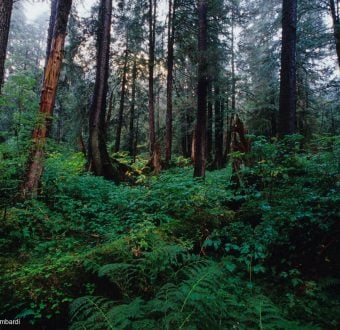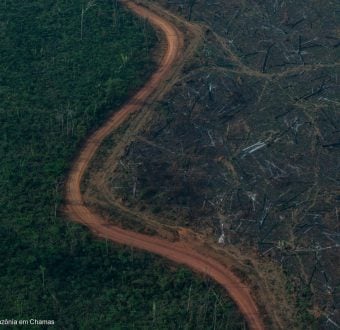“The removal of Kimberly-Clark products from UVM is a strong indication that the company is not producing an environmentally sound product,” said Lindsey Allen, Greenpeace forest campaigner. “Kimberly-Clark claims to be an environmentally responsible company, but it uses wood pulp that is clearcut from the Boreal to make throwaway products like tissues and toilet paper. Today UVM joined other universities in saying that they will use their purchasing power to demand that Kimberly-Clark use recycled paper and stop wiping away ancient forests for disposable paper products.”
Colleges and universities that have participated in the Greenpeace “Kleercut” campaign include: Harvard University, University of Miami, Rice University, American University, Wesleyan University, University of California, Berkeley, and Northern Arizona University.
Additionally, in the U.S. and Canada, 728 businesses have so far pledged to replace Kimberly-Clark products with environmentally friendly alternatives. Less than 17 percent of the pulp that Kimberly-Clark uses comes from recycled sources and many of the company’s suppliers of virgin tree fiber, especially in Canada, continue to clearcut ancient forests: habitat for grizzly bears and woodland caribou and essential in the fight against global climate change.
A recent Greenpeace report revealed that Kimberly-Clark devastated Ontario’s Kenogami Forest while promoting itself as a leader in environmental and social responsibility. The report, “Cut and Run,” uses government information, independent audits, public records, and satellite mapping to document Kimberly-Clark’s management and logging of the Kenogami Forest near Thunder Bay, Ontario. It details how, in just 70 years, the Kenogami Forest has been turned from a vast expanse of healthy, near-pristine forest, to a severely damaged landscape rife with social and environmental problems==largely to make products that are used once and then thrown away.
VVPR info: Daniel Kessler, Greenpeace, (970) 690-2728 (cell); Lindsey Allen, Greenpeace, (415) 710-5601 (cell)
Notes: For more information on the businesses that have pledged to use alternatives to Kimberly-Clark products, please visit www.forestfriendly500.org
For more information about Greenpeace’s campaign to save the Boreal and to download “Cut & Run,” please visit www.Kleercut.net.
About Greenpeace
Greenpeace is the leading independent campaigning organization that uses peaceful direct action and creative communication to expose global environmental problems and to promote solutions that are essential to a green and peaceful future.
About Boreal forest destruction
1. Twenty-five million acres of ancient forest are being cleared or destroyed every year around the world. In fact, ancient forests cover only seven percent of the Earth’s entire land surface. The world’s ancient forests maintain environmental systems are essential for life on Earth. They influence weather by controlling rainfall and evaporation of water from soil. They help stabilize the world’s climate by storing large amounts of carbon that would otherwise contribute to climate change. These forests also house around two-thirds of the world’s land-based species of plants and animals. They are home to millions of forest-based communities and people who depend on them for their survival and livelihoods.
2. One of the ancient forests Kimberly-Clark continues to destroy is North America’s Boreal forest. The Boreal forest stretches across the country, from the eastern Alaskan to Labrador. The Boreal has evolved for over 10,000 years and is the largest tract of ancient forest left in North America, making the protection of the Boreal forest absolutely critical. Representing roughly 25 percent of the world’s remaining ancient forests, North America’s Boreal forest truly is a global treasure. The thick layers of moss, soil and peat of the Boreal forest form one of the world’s largest terrestrial storehouses of carbon. This carbon storehouse plays an enormous role in fighting climate change. The Boreal forest is also home to hundreds of wide-ranging wildlife species, including moose, caribou, lynx, bear and wolves. Eagles, hawks, owls, 30 percent of North America’s songbirds and 40 percent of its waterfowl nest in the forests and wetlands. The Boreal is a diverse and awe-inspiring landscape of granite outcrops, lakes, rivers, and marshes interspersed with pine, spruce, fir and poplar forests.

